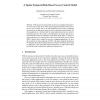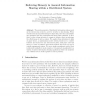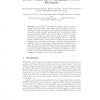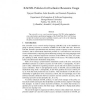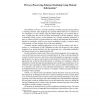DBSEC
2007
14 years 1 months ago
2007
Abstract. Modern information systems require temporal and privilegeconsuming usage of digital objects. To meet these requirements, we present a new access control model–Times-bas...
DBSEC
2007
14 years 1 months ago
2007
Abstract. The database server is a crucial bottleneck in traditional inference control architecture, as it enforces highly computation-intensive auditing for all users who query th...
DBSEC
2007
14 years 1 months ago
2007
With the growing advancement of pervasive computing technologies, we are moving towards an era where spatio-temporal information will be necessary for access control. The use of su...
DBSEC
2007
14 years 1 months ago
2007
The growing number of distributed information systems such as the internet has created a need for security in data sharing. When several autonomous parties attempt to share data, t...
DBSEC
2007
14 years 1 months ago
2007
Abstract. In this paper, we present the design of gVault, a cryptographic network file system that utilizes the data storage provided by Gmail’s web-based email service. Such a ...
DBSEC
2007
14 years 1 months ago
2007
The extensible access control markup language (XACML) is the standard access control policy specification language of the World Wide Web. XACML does not provide exclusive accesse...
DBSEC
2007
14 years 1 months ago
2007
DBSEC
2007
14 years 1 months ago
2007
Abstract. The event-condition-action (ECA) paradigm holds enormous potential in pervasive computing environments. However, the problem of reliable delivery of event data, generated...
DBSEC
2007
14 years 1 months ago
2007
Security and privacy concerns as well as legal considerations force many companies to encrypt the sensitive data in databases. However, storing the data in an encrypted format enta...
DBSEC
2007
14 years 1 months ago
2007
Abstract. Despite the widespread adoption of Role-based Access Control (RBAC) models, new access control models are required for new applications for which RBAC may not be especial...

